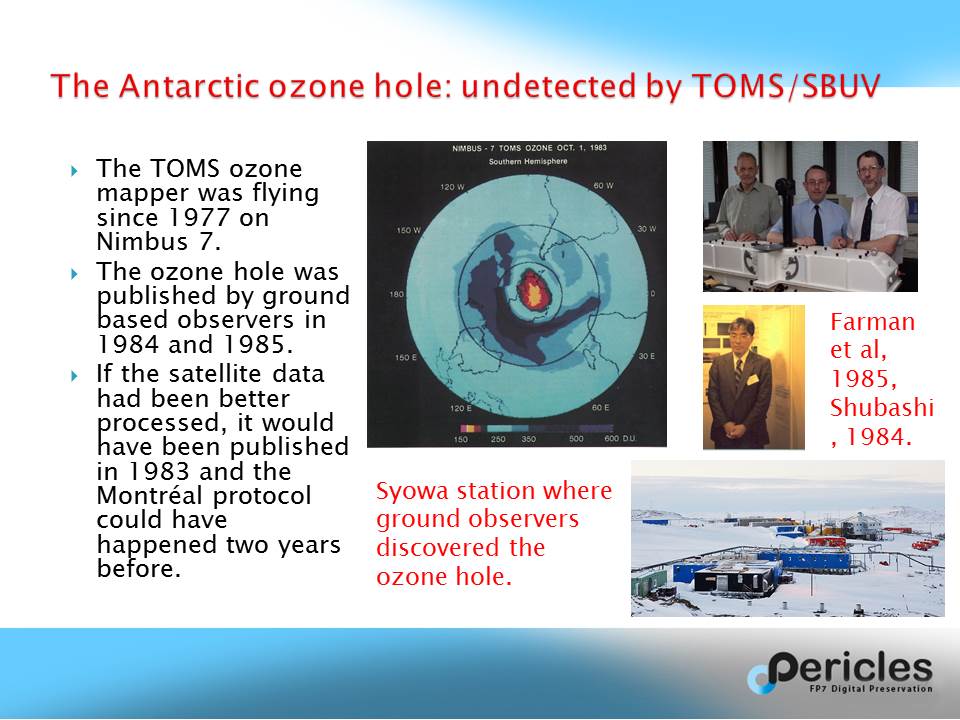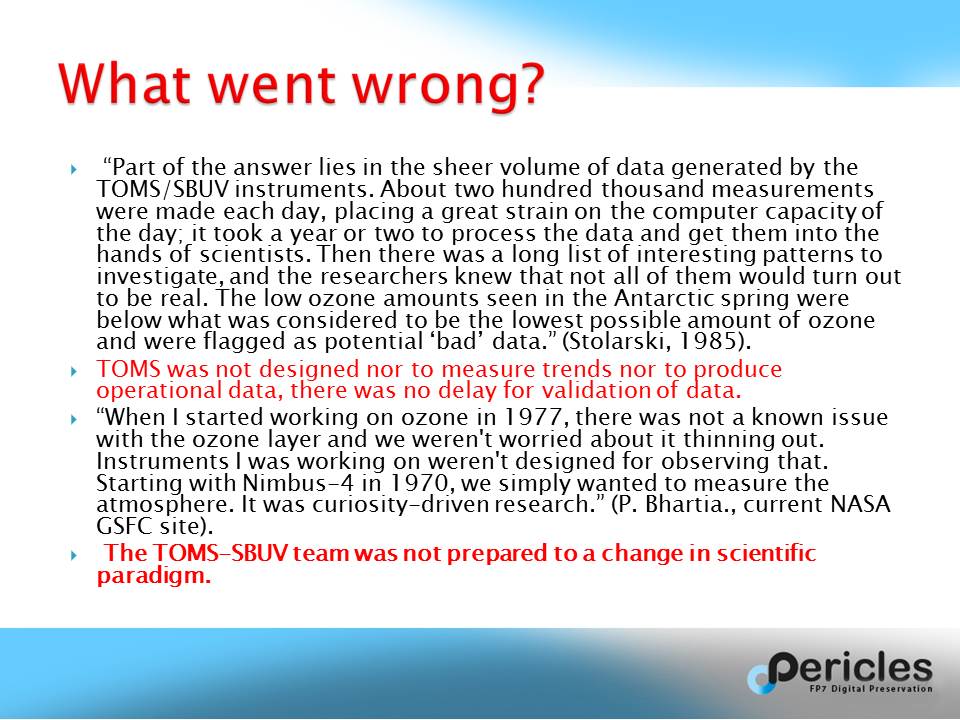Since around 1980, the early October ozone values show a spectacular decrease on most of the continent; this is now known to be associated with the Antarctic vortex and chemical activity related to chlorine from man-made emissions. It was published first in 1984 by Japanese observers at the Syowa station and in 1985 by British scientists at Halley Bay station. The discovery could have been much earlier if the NIMBUS 7 TOMS (Thematic Ozone Mapping Spectrometer) had been correctly interpreted. This would have advanced the 1987 Montréal Protocol by several years.


